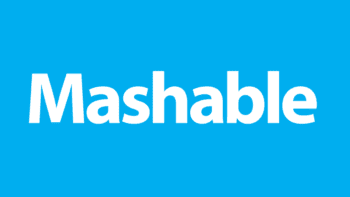Instagram, Licensing and Embedding
There's no reason to panic... but you should pay attention.

Last week, the United States District Court for the Southern District of New York ruled in favor of the tech news site Mashable in their case against photographer Stephanie Sinclair.
The story of the case is remarkably simple. Mashable, as a news site, approached Sinclair about licensing an image she took entitled “Child, Bride, Mother/Child Marriage in Guatemala” for use on their site. Mashable reportedly offered $50 for licensing rights to the image but Sinclair declined.
However, Mashable then turned to Sinclair’s Instagram account, where she had previously uploaded the image. There, using the Instagram API, Mashable embedded the Instagram post, along with the image, in a March 2016 post about female photographers.
This prompted Sinclair to file a lawsuit claiming that Mashable had violated her copyright. However, the court dismissed the complaint ruling that Mashable’s embedding was completely legal and that Mashable had a valid sublicense from Instagram to use the image.
The response to this decision has been very loud. Headlines such as “Court Rules Photographer Gave Up Exclusive Licensing Rights by Posting on Instagram” have populated the internet and made this case seem as if there had been a major shift in the way courts were looking at the licensing of content uploaded online.
The decision also seems to go against a February 2018 ruling against several news sites that found embedding a tweet, and the image that came along with it, did not immunize the sites against liability for copyright infringement.
However, neither of those things are true. The case doesn’t represent a major shift in embedding or licensing and, while the case does point to things that Instagram can improve on, there’s no real cause for panic. However, there is a lot of cause for reflection and thinking more deeply about how we share content online.
The Battle Over Embedding

To be clear, there is a strong argument that Mashable acted in an unethical way. After all, the site did approach Sinclair about a license and, after being declined, turned to her Instagram account so they could use the image in spite of her stated wishes. However, if you remove Mashable’s first attempt to license the image, what happened is simply that Mashable embedded a legally-uploaded Instagram post.
Setting aside the licensing and the TOS for a second, Sinclair uploaded the photo to Instagram, a site that enables other people to embed posts, and did not do anything to prevent others from embedding it (namely setting her account to private). To that end, it’s not much different from a YouTuber uploading a video and enabling embedding and then objecting when that video appears on other sites.
While Instagram does offer significantly fewer tools for controlling embedding, a point we’ll look at in more detail below, an image being embedded on third-party sites is a fully predictable consequence of uploading an image to Instagram. Though the Sinclair case didn’t delve into the issue, it’s been argued that offering content for embedding gives an implied license for such embedding to take place.
However, that doesn’t really apply to this case as Sinclair had stated directly she didn’t want her image used. This is likely why the court looked at Instagram’s right to grant sublicenses. Many feel that the Instagram terms of service are overly broad here and, in a word, I agree.
But this isn’t a case of Instagram setting up a new stock photo site and charging money to use Sinclair’s images while paying her nothing. This was done through Instagram’s API and under the restrictions of Instagram’s privacy policy and using a system that Instagram has had in place for years. A similar lawsuit likely would have met a similar fate a decade ago.
While the case is certainly a reason for creators of all stripes to be more careful about when/how/where they put their work on the internet and to pay attention to the terms of service when they do so, it doesn’t break any new legal ground nor does it really change anything that hasn’t been a reality for many years.
This includes the aforementioned 2018 case that found embedding Tweets (and images) could be illegal. Even though the news site won this case, it’s also very easy to see how they could have lost it with just one change in the facts.
No Vindication for Embedding
In 2007, the Ninth Circuit Court of Appeals handed down a ruling in the Perfect 10 v. Amazon case that created what is now known as the “server test.” The case, which looked at Google’s inclusion of infringing images in their search results, found that, as long as the images were not hosted on Google’s server, they were not liable for any infringement.
However, in 2014 the Supreme Court ruled in the Aereo case that such issues “should not hinge on invisible, technical processes imperceptible to the viewer.” That case was cited in a New York district court, which is part of the Second Circuit, when ruling that various news agencies infringed the copyright of a photographer by embedding Tweets with his image as part of their news coverage.
While this case might seem similar to Sinclair’s, there’s one huge difference: The photographer in that case never uploaded the images to Twitter. Instead, he had placed the image in question on his Instagram story and one of his followers, without his permission, uploaded it to Twitter and it was the infringing Tweet that was embedded.
In the Sinclair case, her original upload was fully legal. She had every right to post her image to Instagram. However, in doing so, Instagram made the image available for embedding, which Mashable did and was within their legal right for doing so.
For news sites, this is not carte blanche to go crazy with embedding Instagram photos, Tweets and Facebook posts. The reason is simple: If the original upload was itself an infringement, there is no guarantee that they would be protected from liability by embedding it.
One of the main reasons news sites like embedding is because they don’t want to go through the time and expense of licensing an image. Determining who the creator is, who controls the rights and then securing those rights takes time and resources. The 2018 ruling means that news agencies still need to verify that the content was legally-uploaded and, for many, that is the exact headache they were hoping to avoid.
We are not back to the server test (not that it has gone away completely) and creators can still control their work. They just need to be careful about when and how they share it online.
What Does Need to Change
All of this said, there’s still a lot of room for improvement, especially with Instagram. Currently, Instagram only offers one way to decline embedding: Making your account private. For many photographers, this presents something of a devil’s choice, either use Instagram and make all of your uploaded images available for free embedding, or miss out on using the service as a promotional medium.
Because of this, many photographers are calling for Instagram to enable YouTube-like controls that let users decided whether they wish to allow embedding on their account or their specific posts. To me, this seems to be an easy decision.
As Instagram becomes more and more essential to visual creators, it seems like a simple fix to just implement the same kind of embedding controls available on other platforms for years. Such basic controls would have likely prevented this lawsuit and helped avoid a lot of heartbreak.
While there is a larger issue about overly broad user agreements and the potential abuses of those, the more immediate problem can be resolved very easily with a simple technology fix.
That would ultimately be better not just for creators, but for those using embedded posts as they could be more confident that their embedding was something the original uploader wanted and authorized.
Bottom Line
I know throughout this post it may sound like I’ve been very critical of Sinclair. However, I completely understand where she is coming from and sympathize. She told Mashable no to the use of her image and they did so anyway.
There’s not much doubt in my mind that Mashable acted in a way that’s unethical and that they should be taken to task for using technical and legal workarounds to avoid respecting an artist’s boundaries. It may not be illegal, but I find it difficult to support it as well.
However, what they did was not illegal and the panic over the case is far outstripping the actual impact of the ruling. Much like the Blurred Lines case, for all of the headlines and attention, nothing has shifted legally here.
However, unlike the Blurred Lines case, there is hope some good comes of this. There is pressure on Instagram (and through proxy Facebook) to change what is a clearly stupid policy, artists are hopefully more aware of what they are agreeing to when joining such sites and some may alter where and what they upload for free online.
If you are a creator, maybe now is a good time to comb through the agreements you’ve signed and see what changes you need to make to your strategy. It’s not about avoiding Instagram, Facebook or Twitter, but about finding a balance that works for you.
For every creator that balance will be different. But the main thing is to understand the dangers and to seek out that balance accordingly.
Want to Reuse or Republish this Content?
If you want to feature this article in your site, classroom or elsewhere, just let us know! We usually grant permission within 24 hours.
